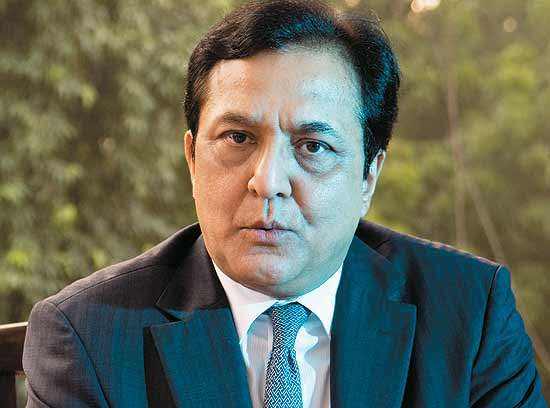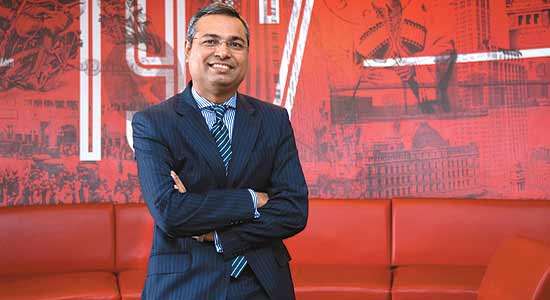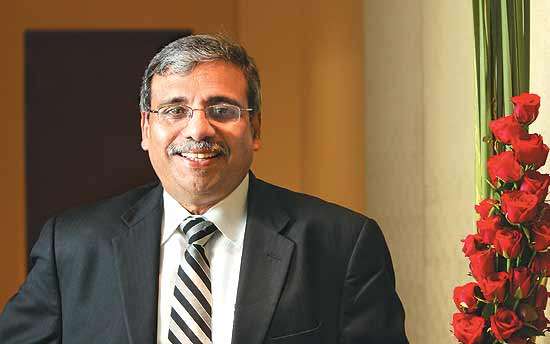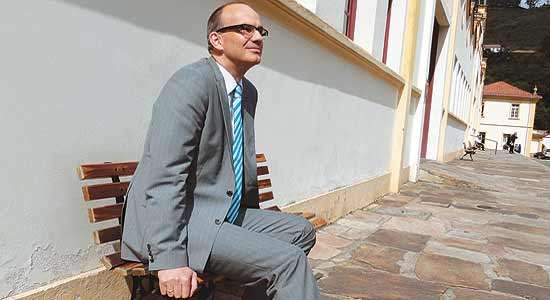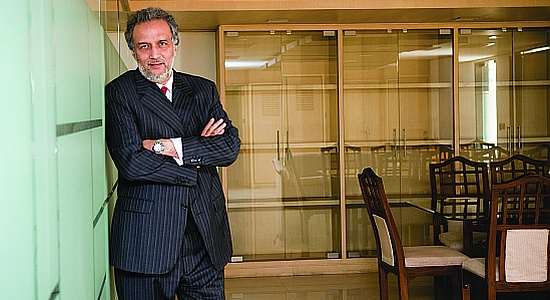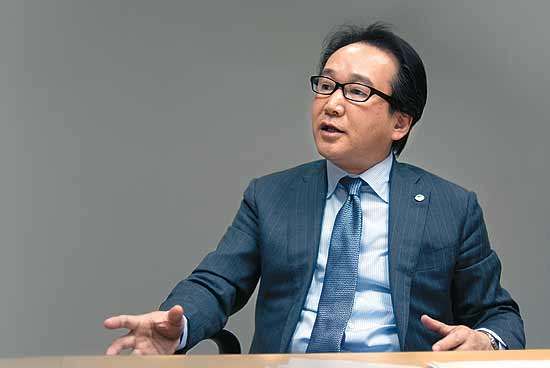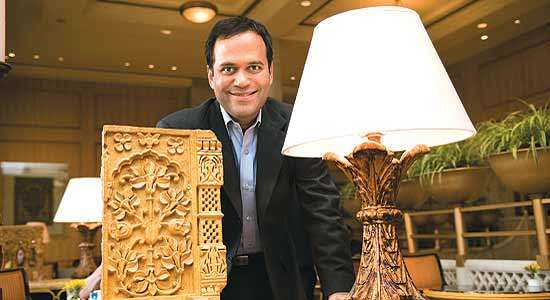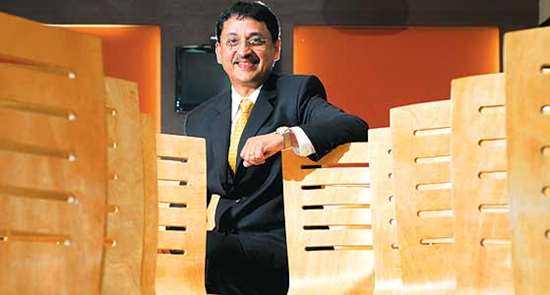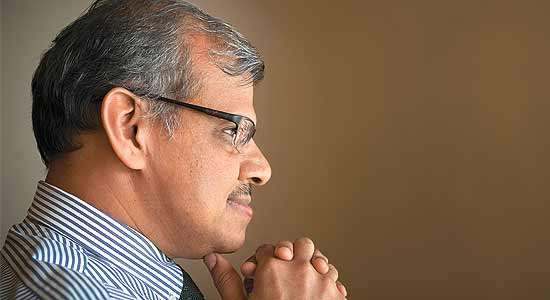Rana Kapoor, Founder, Managing Director and CEO, Yes Bank, talks to Dr Amit Kapoor of the Institute for Competitiveness about the bank’s strategic emphasis and his views on industrial convergence.
What is the current state of the banking industry in India?
Banking in India is fairly well developed, yet fairly under-penetrated and grossly under-served at the same time. While the country has nearly 90,000 bank branches, in reality, the average number of people served per branch is roughly 15,000, which means that there is under-penetration and under-service.
The market is also fairly lopsided. The top government banks have roughly 75% of market share, private sector banks have approximately 20%, and the balance is spread between foreign banks. In the aftermath of the global crisis, foreign banks lost a share of the market and a significant part of that share moved to private sector and public sector banks.
In the last five years, the industry has transformed into being more efficient, customer-friendly and demand-driven. One of the biggest successes of the Indian banking markets has been the advent of payments systems driven by the Reserve Bank of India (RBI)—whether it is large payments done in real time, mid-sized payments done on any fixed deposit, or small payments on National Electronic Funds Transfer. You settle directly from bank to bank without having to go through the RBI clearing system.
Yes Bank’s 4Cs*
Competition
- Large market, little perceived competition
Customers
- Increasing focus on semi-urban and urban customers
- Corporates and SMEs
Context
- Well developed, yet under-served and under-penetrated industry
Company
- Emphasis on responsible banking
- Architectural outsourcing
- Increase branches from 171 to 750 by 2015
Strategy Demystified*
Industry Dynamics
- Market share: 75% government banks, 20% private banks, 5% foreign banks segmenting
Leveraging Unique Activities
- Professionals’ bank of India
- Owner-manager-partner management philosophy
- Emphasis on exploitation of technology
Segmenting Strategically
- Retail assets 30% of customer base, 40% corporate banking, 30% SME and mid-market businessExploiting Tradeoffs
- Low initial focus on SME segment.
How will this translate into opportunities for the banking sector at large?
We believe that the opportunity in the Indian marketplace is terrific. The markets have turned around progressively, and we’re entering the second phase of the golden era of the Indian economy. In the next 10–30 years, as India takes centre stage as the knowledge economy of the world, driven by entrepreneurship and sunrise sectors, the country will establish a comparative and competitive global advantage, and this means tremendous opportunities for the banking sector.
Banks will need to develop new strategies focused on sunrise sectors like agribusiness, life sciences, infrastructure, renewable energy, retailing, etc. We will see exponential growth in financial services led by the banking sector by 2020.
And for Yes Bank specifically?
Yes Bank has taken a new mantle of professional entrepreneurship defined as the “Professionals’ Bank of India”, driven by an uncompromising mission to build quality, and to provide superior and consistent services, which I think is a very big gap in terms of the overall banking experience in our country.
From 2003 to 2008, there was a growth of almost 20% per annum in the banking sector. A bank like ours is in the phase of making a paradigm shift in banking by creating uniqueness, not just through our name but also through our service culture. As a bank, we plan to provide full lifecycle banking products—working capital, expansion capex, structured finance, investment banking solutions and growth equity capital, among other things.
Through Yes Bank’s knowledge-driven approach, we focus on the sunrise sectors of the Indian economy with a sharp focus on banking for SMEs.
In our two-phase strategy, phase one was ‘opportunity in adversity’. Now, it’s ‘seize the opportunity every day’.
Is there a huge dichotomy between urban and rural areas in terms of service and penetration?
Roughly 70–75% of deposits and almost 75–80% of loan advances come from the top 200 banking centres in the country.
Until now, banks have not seen priority sector obligations as an attractive business. Over the last few years, the opportunity and growth in rural markets is equalising with urban markets. The fact that there is tremendous deposit potential and potential for inclusive banking is making banks recognise rural markets as an economically-viable model. Transformational technologies such as mobility, improved penetration and knowledge of operating and internet services, are making semi-urban and rural markets more attractive for banks.
When you talk about technology, what architectural shifts do you predict in the industry because of it?
Our non-core services like network management, hardware management, and day-to-day, non-essential services have been provided in a bundled manner by Wipro for the last six years. Now, even public sector banks and old private sector banks are reaching out to build efficient architectural outsourcing.
At the same time, it is important that the core applications of a bank reside within the bank itself. At Yes Bank, they are constantly and dynamically upgrading technology to make sure they’re scalable, benchmarked, and refreshed to mitigate obsolescence. I think that this is one huge opportunity that Indian technology infrastructure companies are providing in a very competitive way today.
The only thing my mother asks about how the bank’s doing is, how many people have I hired!
Does technology help in raising customer experience and reducing costs?
Definitely. This is especially true of experiential or creative technologies. For example, when we started the bank, we did not benchmark ourselves with other banks in the world, but with the SAS Institute, Southwest Airlines and most of all, with the branch experience of Starbucks. We felt that Wi-Fi, for example, creates customer intimacy and increases customer time in the branch, thus enhancing proximal opportunity. Another big opportunity we have seen surface in India is recognition technologies like RFID payment technologies and micro-payments, where even global players like Nokia and Obopay have chosen a bank like ours to partner under Yes Bank Mobile Money Service to provide micro-payments up to Rs 50,000.
The overall creative proposition through technology allows you to reduce transaction costs. In banking, it is imperative to create income efficiencies, technology-driven efficiencies and service efficiencies to reduce your cost structures. Today, technology allows you to do that, whether it’s through mobility, low-cost ATM rollouts, revenue share models or service management.
I think the role of call centres is terrific. There again, voice recognition speeds up call routing into the right product and enquiry centre. If implemented and managed well, call centres create a lot of scalability and reduce transaction surcharges.
Boundaries could be blurring somewhere between industries, for example with mobile banking. How do you think industry convergence is happening?
Banks have to recognise that risk management of payments control and anti-money laundering will mitigate once you have the Unique Identification Authority of India (UIDAI) in place. Till that happens, banks are the backbone for all payments risk management. Settlement management national servers are being created. The National Payments Corporation of India (NPCI) was set up in Mumbai recently to handle micro-payments. Even though NPCI is at an experimental phase right now, there is a tremendous potential for increasing penetration through it.
Telecom companies, for example, have very good collection mechanisms in place, something that banks don’t have today. Partnerships between banks and telecom companies, where telecom companies can be business correspondents through their outlets can cut down communication costs for banks. I believe that through such complementary partnerships, the mobile phone itself has created a low-cost delivery model.
If you protect payments with security firewalls, you are basically creating a very efficient, low-cost structure. Looking at the percentage of poor people in major cities, whether it is Mumbai or the National Capital Region (NCR), there is an opportunity to render low-cost services because a lot of urban slums are occupied by migrants, who need banking services.
Next we can look at the insurance industry. In my opinion, anyone who can sell insurance can certainly sell a bank product. I believe that insurance agents can make good overall banking agents for a corresponding bank agency.
I think the telecom and insurance sectors provide good B2B2C models.
Who are your customers?
When Yes Bank started in 2004, our customers were mid-corporates and select large corporates. Our model was to build a good commercial bank with rising capital, and migrate to the larger companies because of cross-sell potential, scalability and lower risk. We have started focusing on the SME sector, and are running a few pilots to become a full service retail bank.
What is the bank’s growth strategy?
Our next growth phase, from 2010 to 2015, will be about bringing a full-blown domestic Indian bank, with a modest international presence to make sure that we can provide international trade and investment advisory in high-density NRI pockets. Retail banking will be our focus.
We are aspiring for our retail asset base to be about 30% of our customer base; our SME and mid-market business to be 30%; and our corporate bank to be about 40%. This expansion and growth phase is driven by excellence in execution and project management, and is about building scale. We aspire to build a Rs 150,000 crore total asset base, a deposit base of Rs 125,000 crore and a loan base of Rs 100,000 crore. This translates into a CAGR of 35% against our CAGR of 74% in the first six years of operation. We believe it is fairly realistic.
The only question my mother asks when she wants to know how the bank is doing is, how many people have I hired! In March 2010, we were about 3,030 people, and we aspire to quadruple this number to 12,000. This will be supported by a commensurate investment in infrastructure. Currently, we have 171 branches, and we plan to increase that number to 400 by 2012-13 and 750 by March 2015.
What challenges do you see coming your way while undergoing this massive scale-up in the next four years?
I think execution in project management is our most important and significant challenge, and I also believe that our people are well equipped to handle this.
Our foundation has stood strong in the face of the economic crisis, and the bank has come out comparatively stronger on the other side. This has largely been due to our two-phase strategy, phase one of which was “opportunity in adversity” in 2008-09, and phase two continues today with “seize the opportunity every day”.
We have a staff strength of 3,600. In the first phase of our growth we could have done a better job of investing in building a trust mark of a different name called Yes. In the next phase, we want to evolve into a rock solid brand as a public trust mark. Significant investments will be made through marketing and advertising, and also through community engagement, inclusive and social banking, working with states in public-private partnership structures and working with the government on developmental projects.
What are your thoughts on leadership, seeing that you are at the helm of a 3,000-people organisation?
In our bank, leadership is defined by an institutional character that has evolved prominently in the last two-and-a-half years as the “Professionals’ Bank of India”.
The top management here are owner-manager-partners in the bank. This sense of professional entrepreneurship in building an institution is the rarest opportunity, without compromising on quality, or on code of conduct and ethics. Over 75% of our board is independent directors, and we are not Kapoor ki haathi. It is an institutionalised character, and it has to go through its own phases and evolve.
Our top management team and even junior managers who join the bank start with some stock ownership in the bank. The compensation methodology includes a competitive salary, a respectable bonus plan, and a third part of wealth creation/ net-worth creation based on longevity of employment. This includes joining stock options, performance stock options and special reward stock options too.
If we were to monetise all our unvested options, 8-9% of the ownership of the bank would rest with the people in the bank. There are not too many non-banking financial companies that have experimented with such a management practice, and we will sustain that. Over time, the bank is going to be largely owned, managed and run by the people in the bank.
Who is your biggest competitor?
The market in India is so sizeable that we are not in competition with anybody, especially at this stage. When we started, we were not competitors for private sector banks or public sector banks. I think there is enough for everyone here to not step on anybody’s toes. I don’t see us competing with the State Bank of India, Axis Bank, ICICI Bank or HDFC Bank, because ours is a non-legacy model, it’s a new basket of Indian growth.
We have 0.6% of the market share, and as far as deposits are concerned, we’re at 0.7%. The expected median growth rate of the market is 18%, so we will still have under 2% of the market share.
If you look at our return on assets (ROA) in the last 10 quarters, we have been in excess of 1.5% and only one or two banks exceed that. Our return on equity (ROE) through this 10-quarter period has been in excess of 20%. Pre-crisis, we were operating at about 48–50% cost to income because of lifecycle evolution, and post-crisis, in the last six quarters, it has reduced to 40% cost to income, even though we’re investing.
So the crisis was a great opportunity for Yes Bank?
It was excellence in adversity, because it built an efficient system, and it gave us the headroom because at 40–42% cost to income we can invest in people and branches, ATMs and dynamic technologies. Outsourcing non-core solutions and being able to scale, and yet retain the benefit of price benchmarking, is a huge factor because you are not saddled with technologies for the depreciation cycle of four or five years.
The second thing is making sure that there is continuous revenue diversity. This means that the model is not just a lopsided lending model, but it has been credit-enhanced by fee businesses like letters of credit and guarantees, and foreign exchange.
Your return on equity or capital employed is far more efficient when you create a good distribution market. We don’t want to be a manufacturer of “raw parts”. So, for example, we don’t want to be in insurance because it has a seven- to eight-year breakeven, but that doesn’t mean we will not sell insurance. We are working towards strategic alliances where we can build B2B2C partnerships with insurance companies because it helps control risks.
Besides execution, what are the other important parts of strategy?
I think professional entrepreneurship is something that will make a massive difference. Developing a knowledge banking institution is important. There are many industrial verticals, segmented geographies, segmented markets, segmented clusters, clients through trade associations—meticulous segmentation gives you the ability to scale.
Corporate social responsibility (CSR) is also a very critical mandate of any strategy now. We call it Responsible Banking, which is a business model entailing a move away from philanthropy-based CSR to applying CSR/ sustainability as a critical business driver. For example, the first urban slum financing model by a bank was done by us, despite being the new kid on the block. The programme is called Yes Sampann and is being carried out in different parts of Mumbai.
So you have been instrumental in increasing the inner city competitiveness?
It is still a pilot, we don’t have scale in that business yet, but you can say that we have done that. We have validated field technologies, crisp management systems and collection management systems, in three pockets of the Mumbai Metropolitan Region. We have been able to experiment successfully, with 98–99% collections.
Where do you see yourself in 10 years? What will you like to be known as?
At an individual level, I want to be recognised as a professional and serial entrepreneur. There is nothing more joyful than entrepreneurship. If I am not doing serial entrepreneurship as a professional, I would simply decay as an individual.
What is the next big opportunity that you are looking at?
I think the next opportunity is to build Yes Bank. The bank has a goal to be the best quality bank anywhere in the world. We will be happy being in the top 500 of the Financial Times 1000 Index, but we will not compromise on quality.
How would you describe your leadership mantra in just one line?
The harder you work, the luckier you get.
CEOs across India speak on strategy and leadership, in an exclusive series developed jointly by Outlook Business and the Institute for Competitiveness. The Strategy Speak interaction was published with Outlook Business on February 5, 2011.

